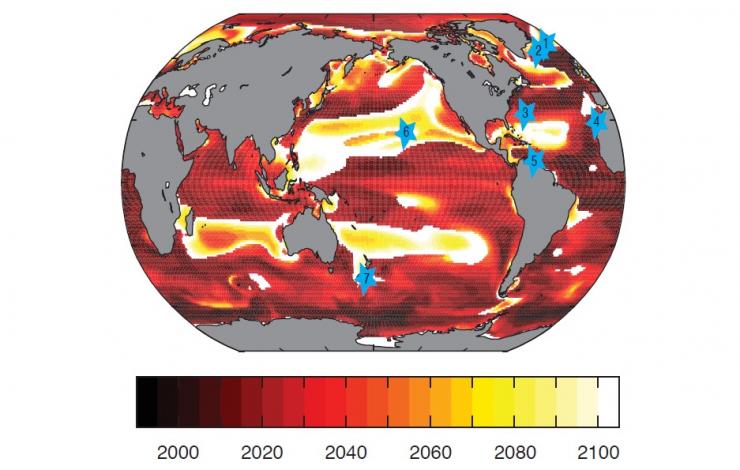
This map shows the timeframe (year) in which the anthropogenic trend becomes distinguishable from internal climate variability. The darker red indicates earlier emergence of the trend while the orange/white areas show emergence later on. The blue stars indicate current ocean carbon sampling locations.
The ocean absorbs a significant fraction, about 40%, of carbon released by fossil fuel burning, thereby reducing climate warming. However, natural climate variability makes it difficult to directly observe trends in the amount of anthropogenic carbon the ocean is taking up with time. PMEL scientist and collaborators utilized a modeling approach to separate out the ocean carbon trend due to man-made carbon emissions from this variability. This separation illustrates the timeframe over which we may expect to observe human driven change in carbon uptake in different ocean regions. The results show that these trends are largely not detectable at present, but may begin to emerge in certain regions between 2020-2050. The Southern Ocean and Atlantic region are projected to show this uptake first, while the latest emergence occurs in the Pacific and Indian subtropical regions.
For more information, read the article in Nature, along with Nature's News and Views, a press release from the University of Wisconsin and visit the NOAA PMEL Arctic project webpage.


